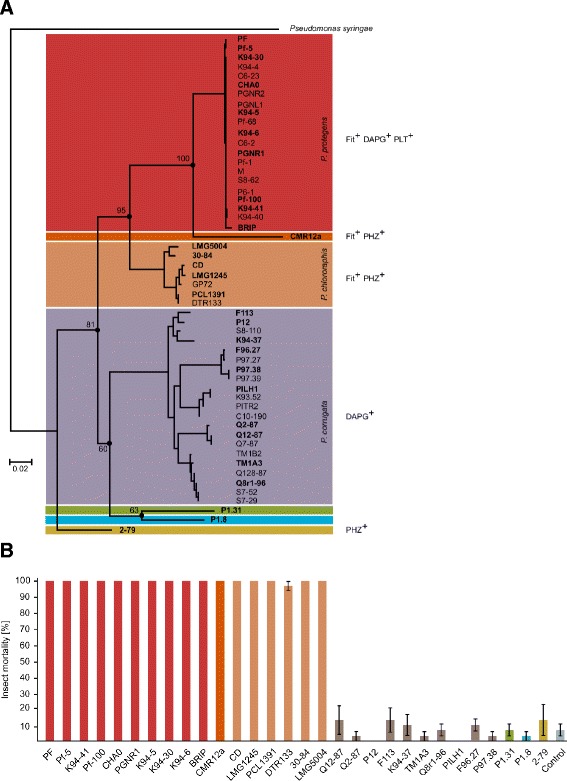Fig. 2.

Insecticidal activity correlates with presence of the fitD gene. (a) The Phylogenetic relationship amongst 29 closely related plant-associated Fit+ and 24 Fit− pseudomonads is based on the three concatenated housekeeping genes recA, rpoB and rpoD consisting of a total of 1469 nucleotide sites with Pseudomonas syringae as outgroup. Strains/subgroups harboring the Fit toxin gene and major antifungal compounds produced by the pseudomonads are indicated: DAPG, 2-4-diacetylphloroglucinol; PHZ, phenazines; and PLT, pyoluteorin. The evolutionary history was inferred using PhyML 3.0. Bootstrap values are based on 100 replicates and indicated for major nodes indicated by circles. Only the P. protegens and P. chlororaphis subgroups harbor the Fit toxin gene. The P. corrugata subgroup containing DAPG producers is indicated as defined by Mulet [1, 2]. (b) Insect mortality of G. mellonella larvae four days after injection of 4 × 104 cells of 17 Fit producing and 13 non-producing Pseudomonas strains. Tested strains are shown in bold in (A). Each strain was tested on a total of 30 larvae (five replicate plates with six larvae per plate). Bars show average of insect mortality for each strain. Error bars show standard error of the mean. The experiment was repeated with similar results (Additional file 2: Table S2). Fit+ strains were significantly different from Fit− based on Wilcoxon rank sum test grouped by Fit+ and Fit− strains (P < 0.05)
